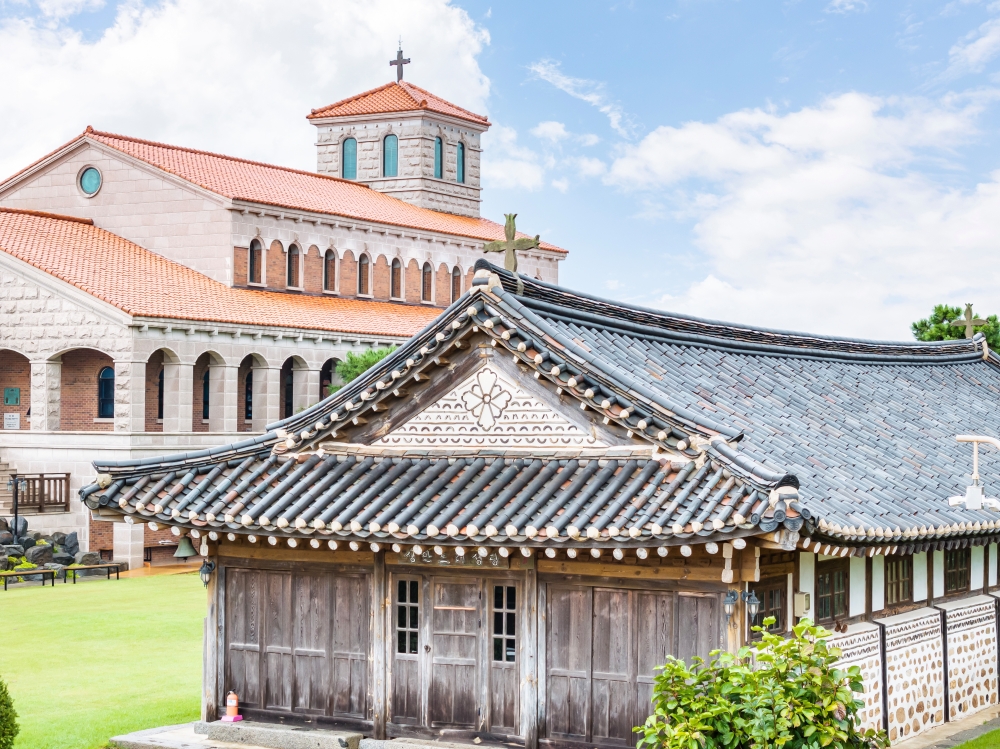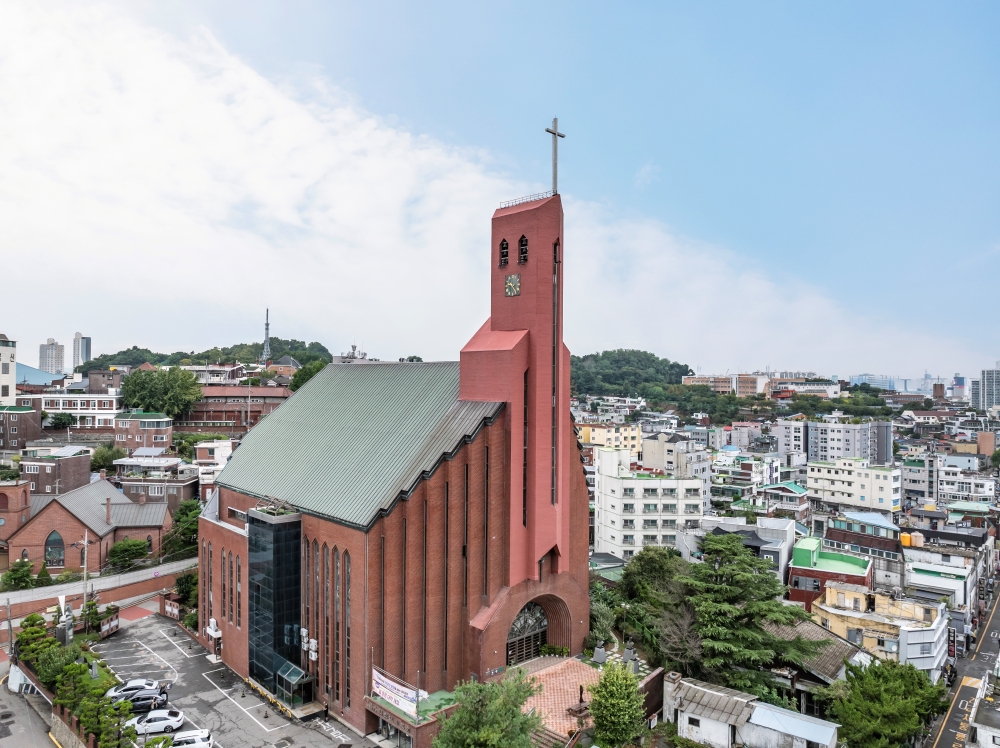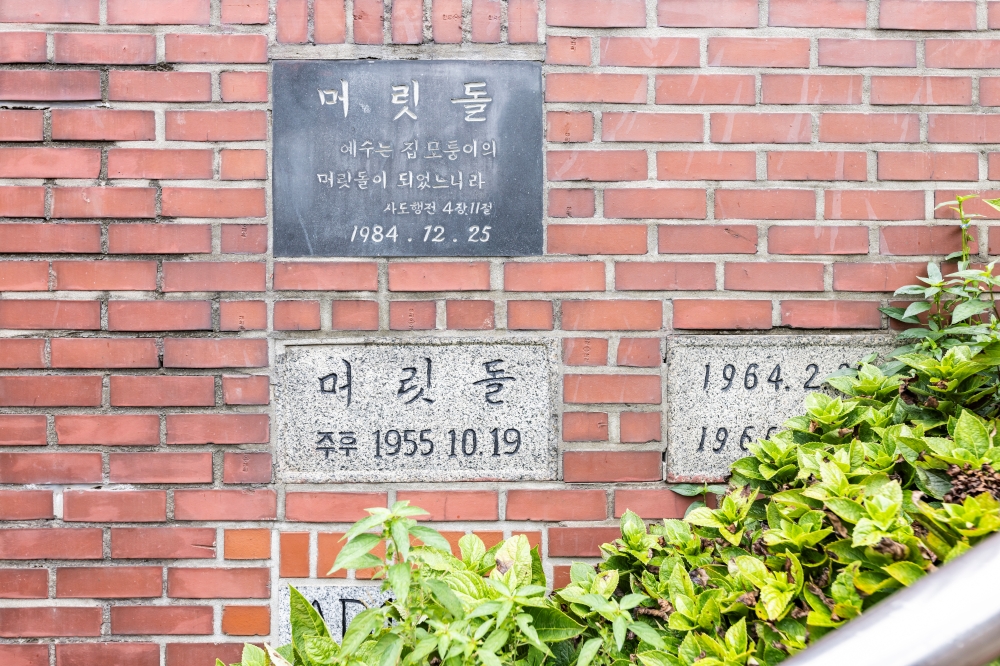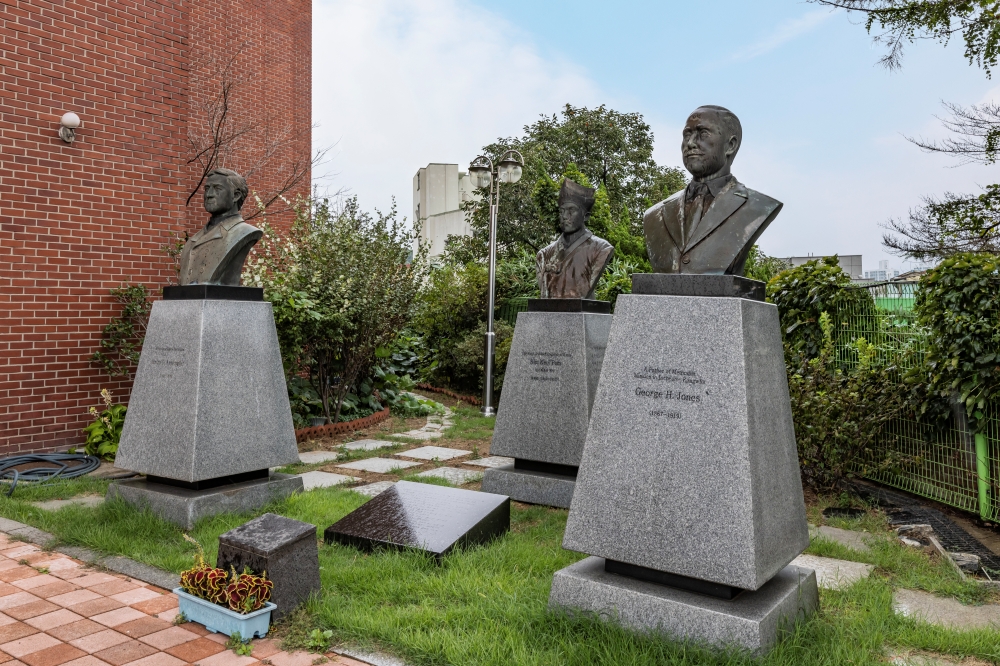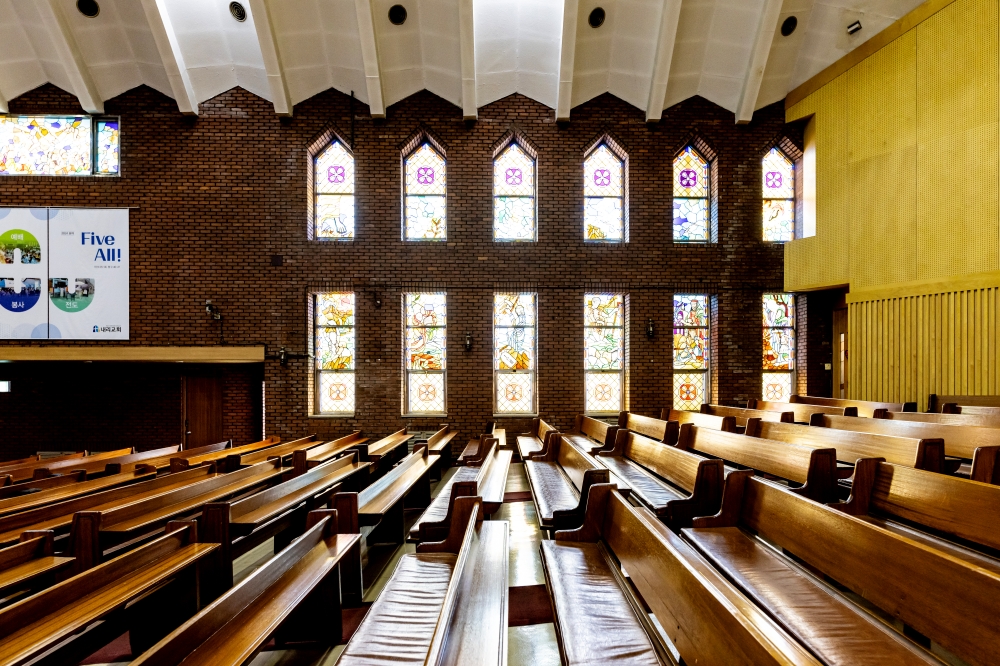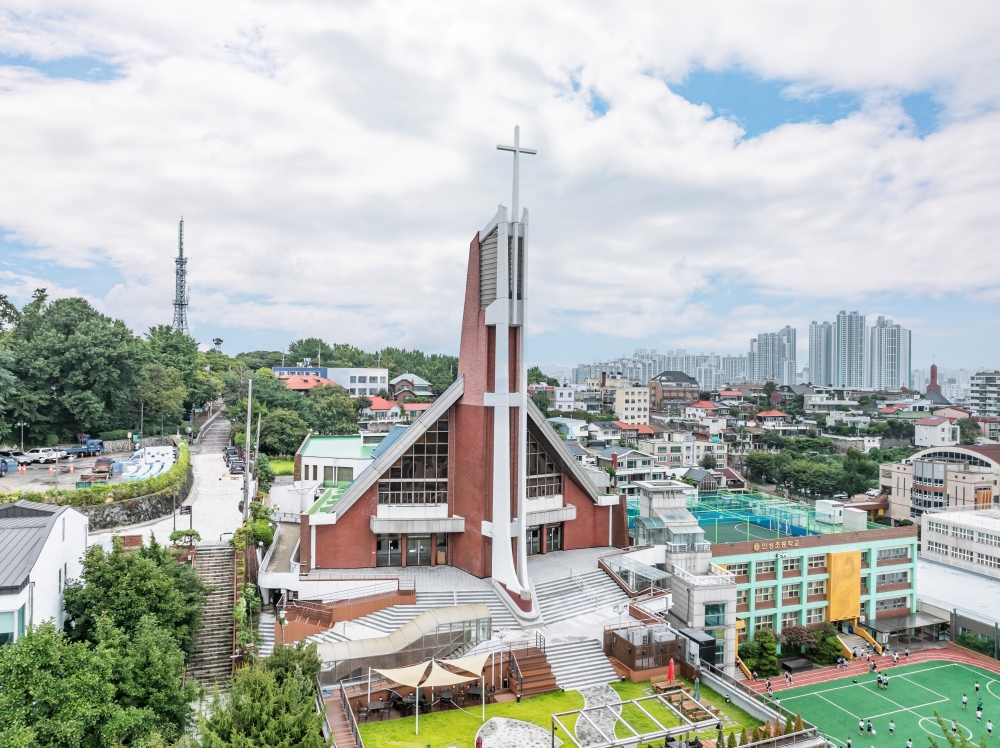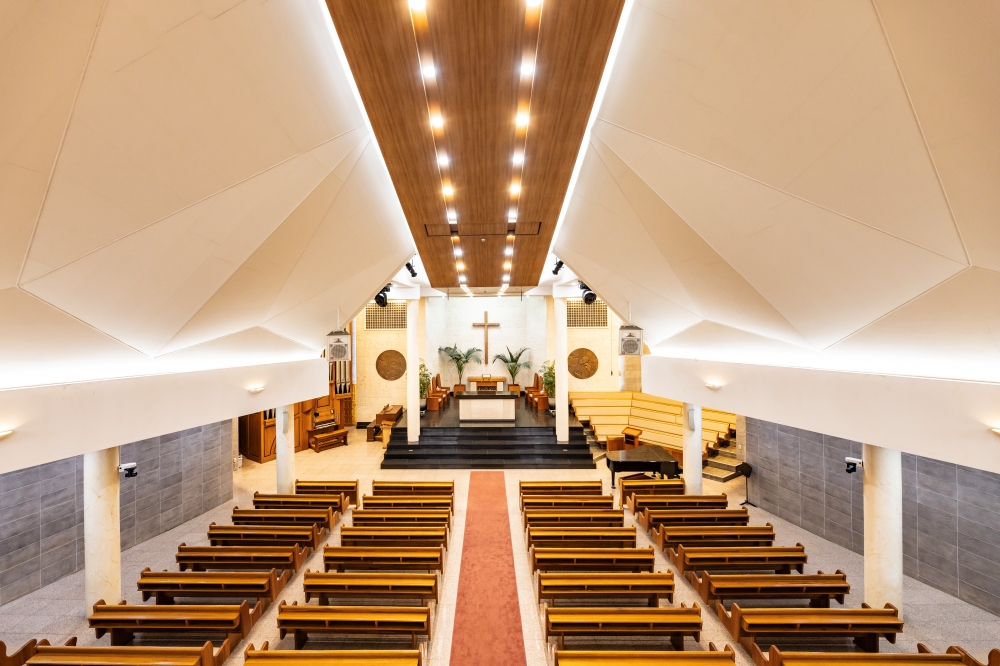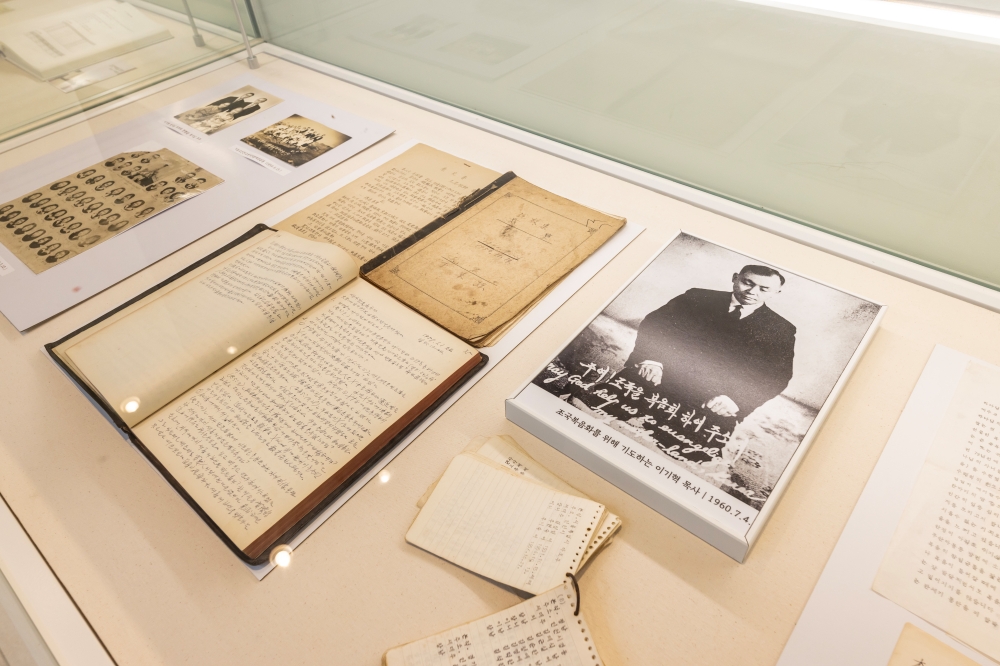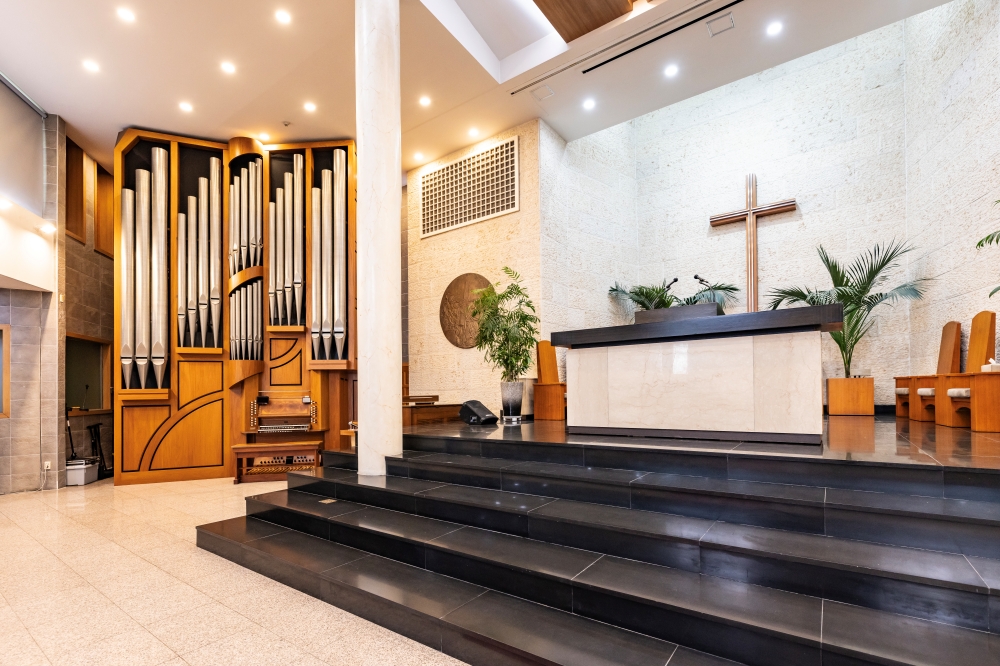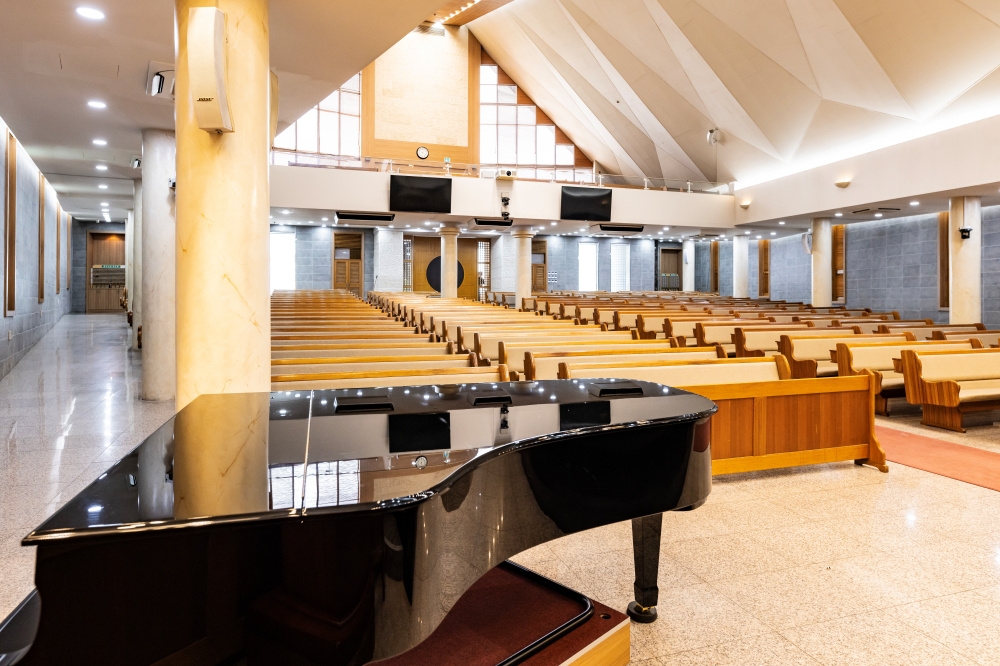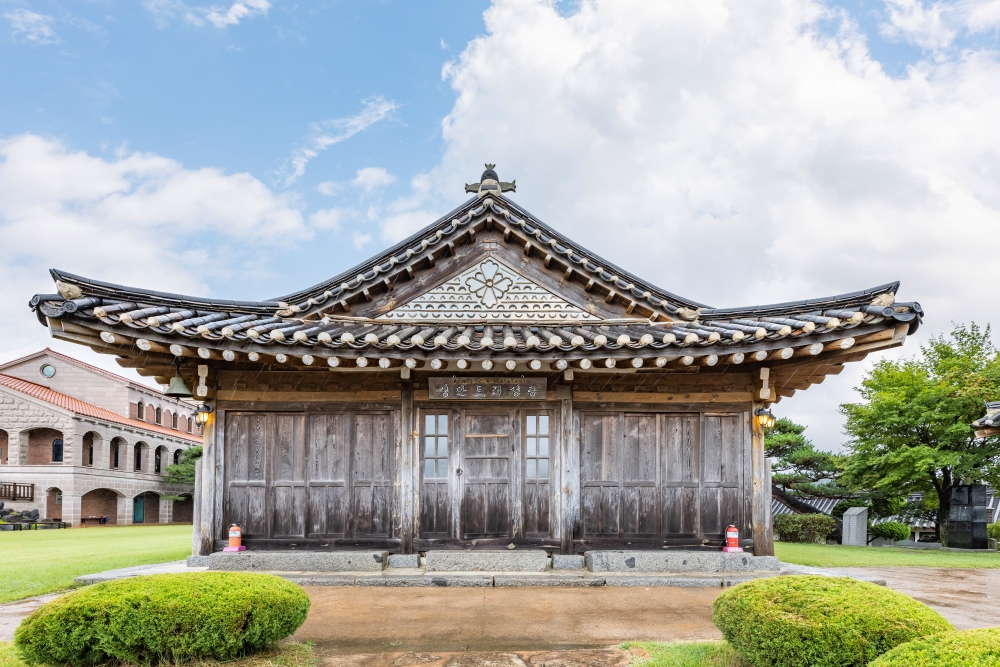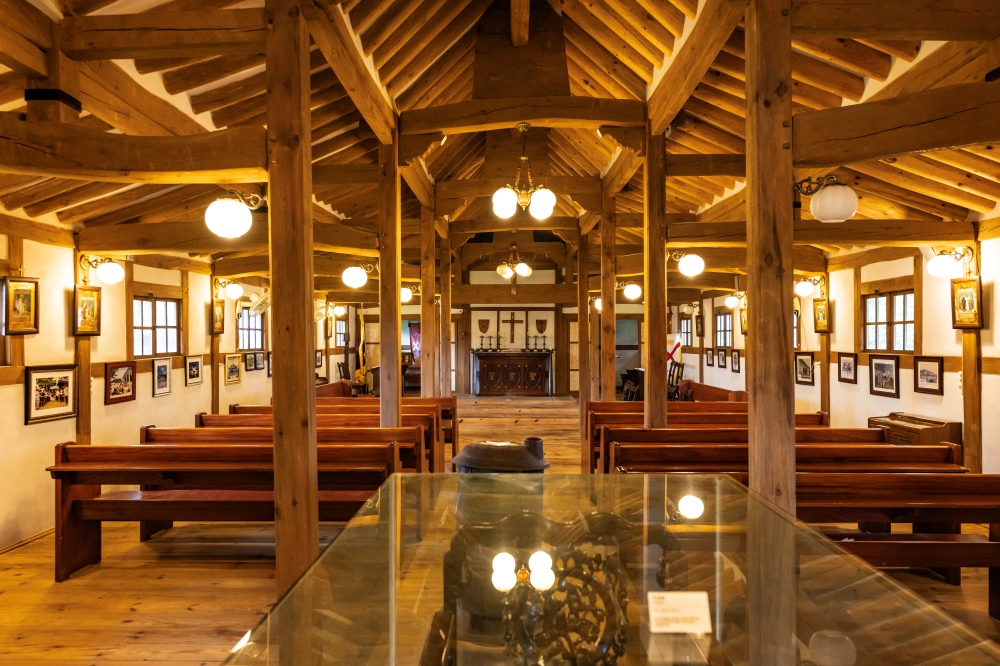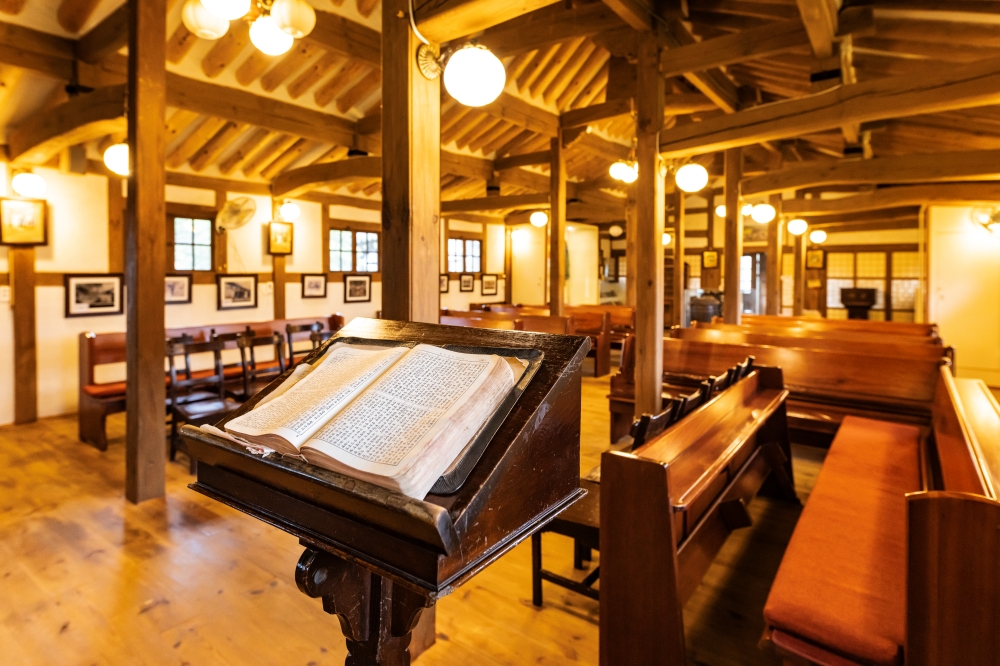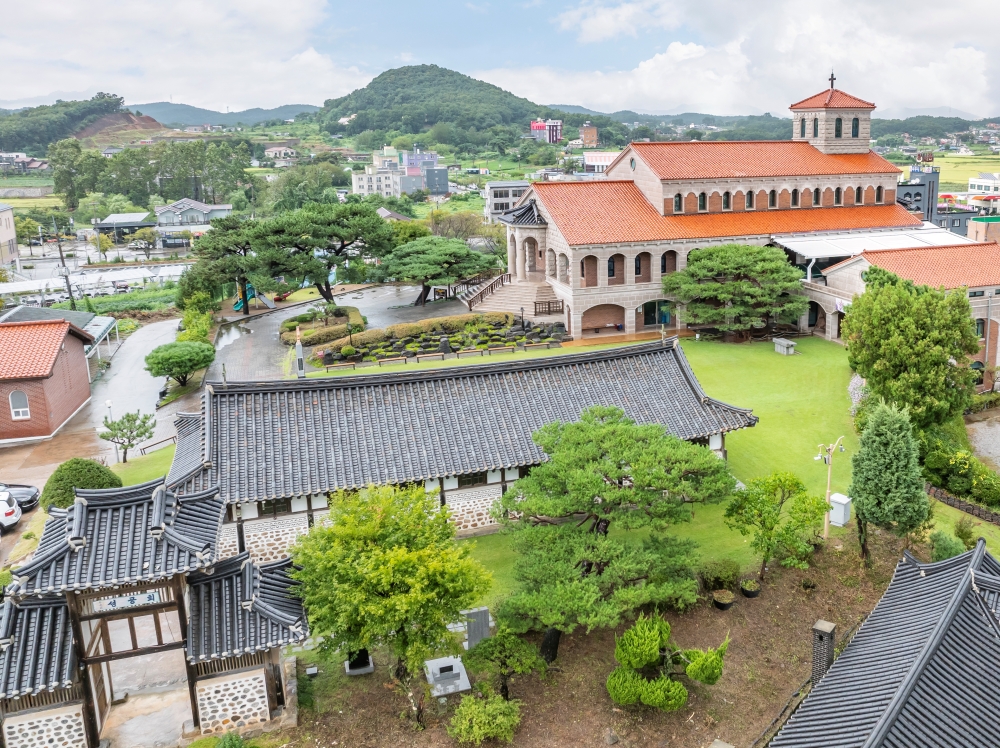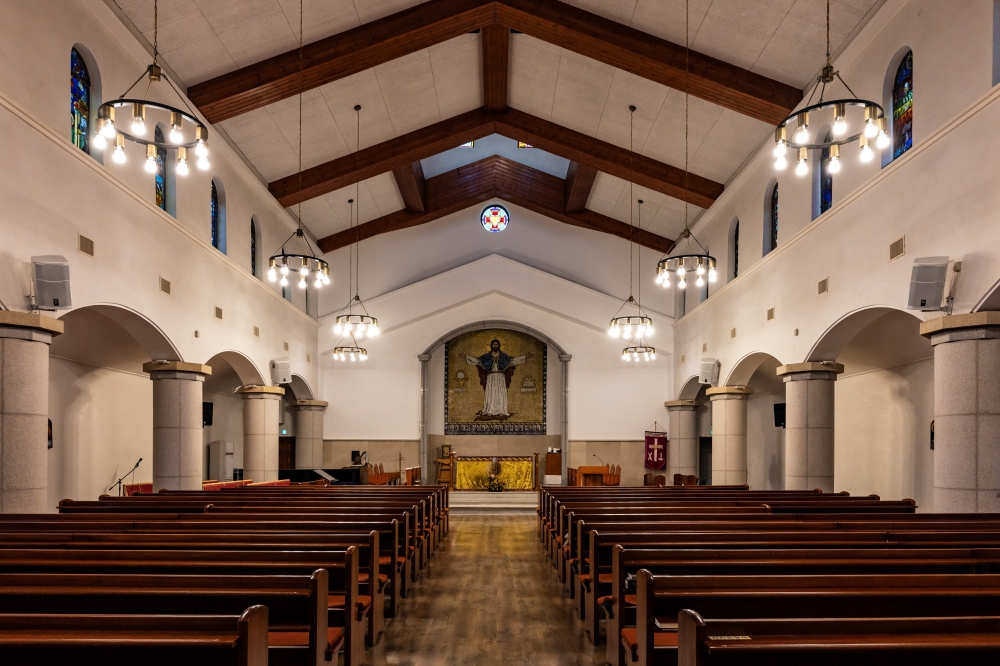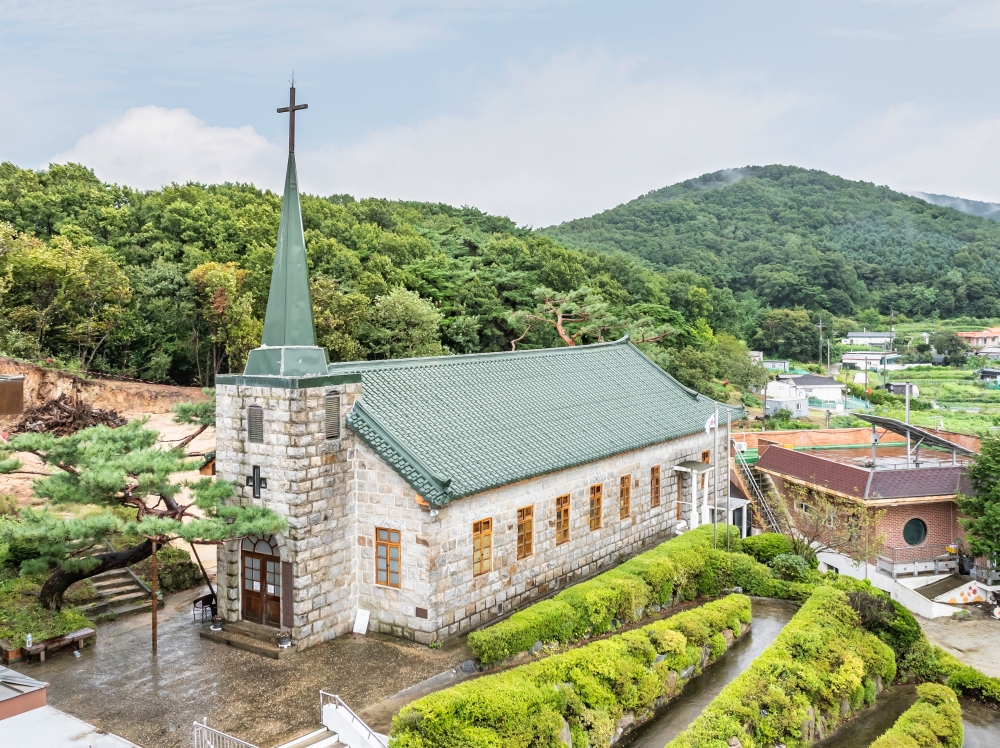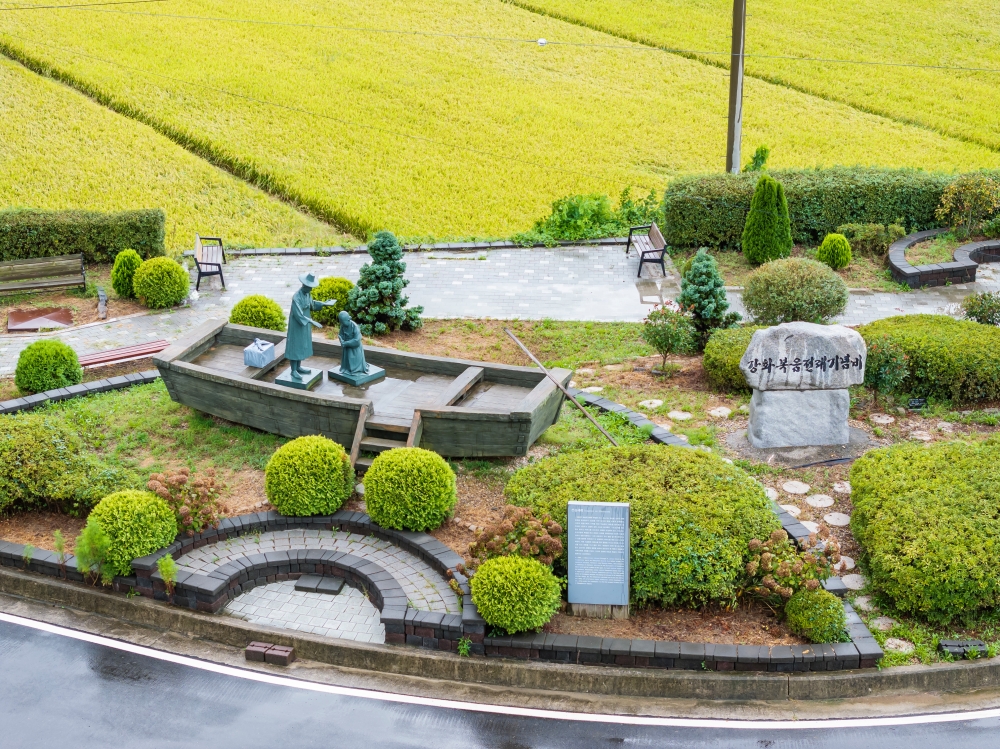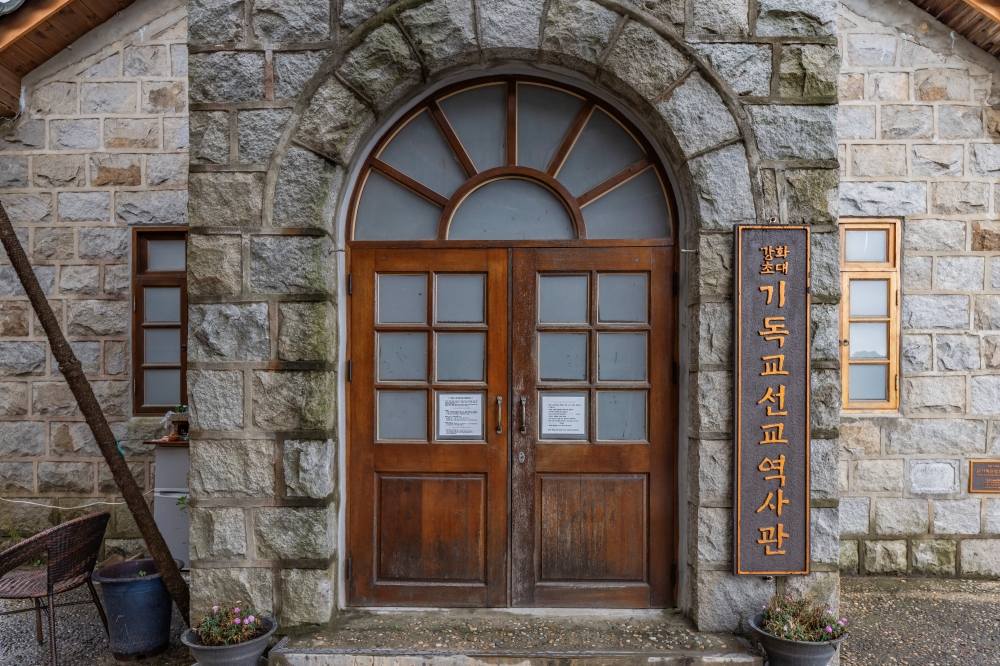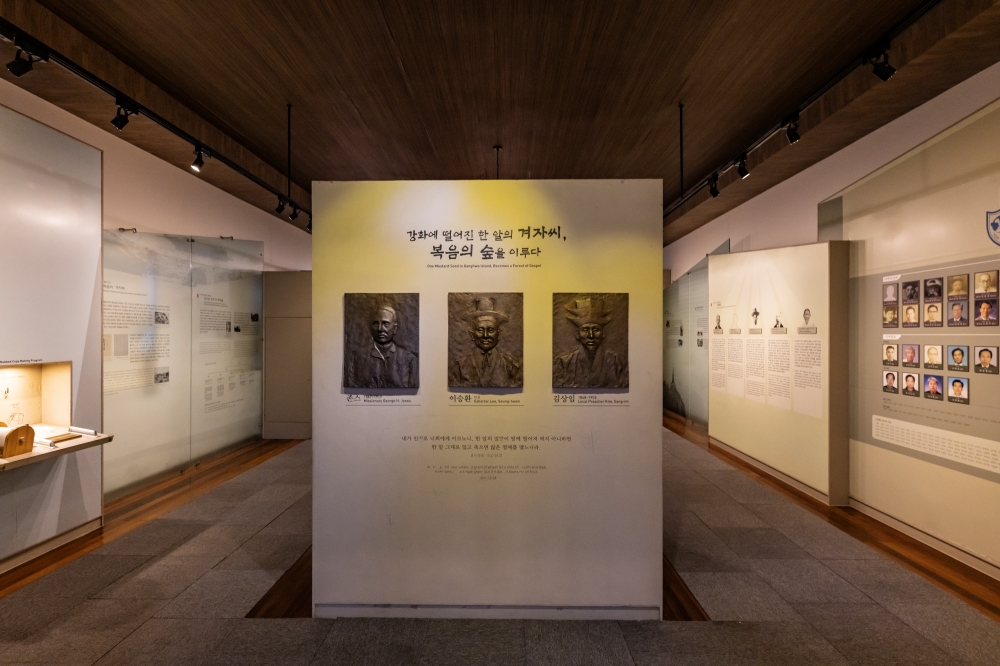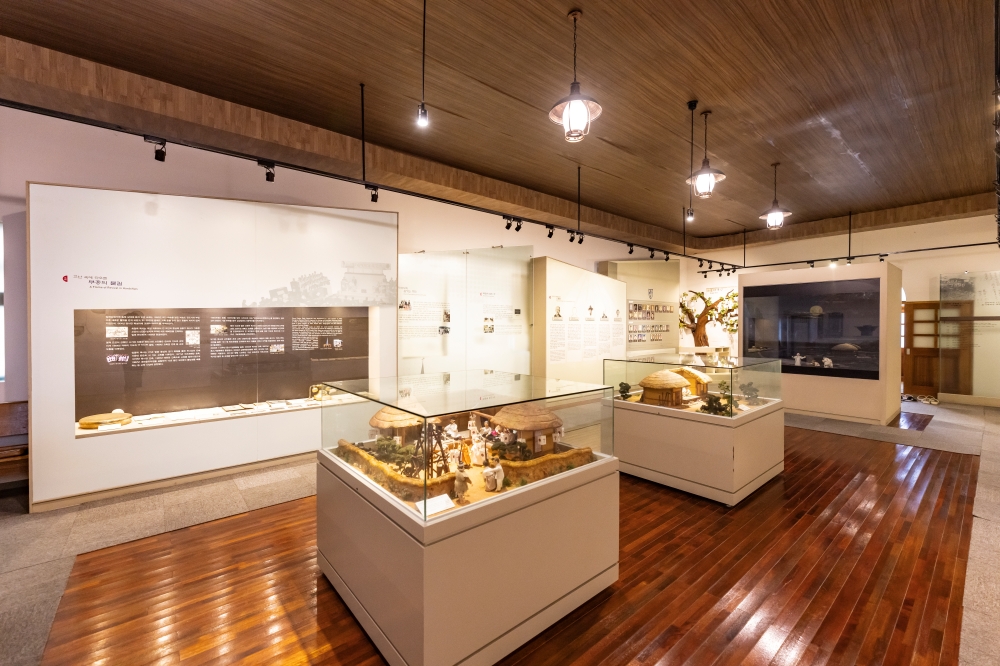“Grant the people of Joseon bright light and freedom.”
One hundred and forty years ago, on Easter in April 1885, two missionaries arrived at Jemulpo Port in Incheon, offering this prayer:
Appenzeller from the Methodist Church and Underwood from the Presbyterian Church.
Stepping onto unfamiliar Eastern soil, these foreign missionaries built churches, hospitals, and schools, caring for the sick and spreading the Gospel.
From the dedication of these missionaries, who served the people of Joseon, to the stories of baptisms performed on a boat,
exploring the churches in Incheon offers an opportunity to appreciate the region’s modern cultural heritage and embark on a journey that traces the path of faith.
Traces of the “Yakdaein” Who Cared for the Impoverished People of Joseon: Incheon Naedong Church, Anglican Church of Korea
In the courtyard of Naedong Church stands a small stone marker inscribed with ‘英國病院’ (British Hospital).
This marks the location of St. Luke’s Hospital, Incheon’s first Western-style hospital.
The hospital was led by Eli Barr Landis, a physician and missionary who arrived in Korea in 1890 alongside Bishop Charles John Corfe, a Royal Navy chaplain.
The people of Joseon held Dr. Landis in high regard, referring to him “Yakdaein” (the term used for Western doctors during the era of enlightenment).
Patients traveled from as far away as Hwanghae-do and Chungcheong-do to seek his medical care.
He worked tirelessly, treating the sick free of charge during the day and teaching English in the evenings.
Tragically, while caring for others, he overworked himself, contracted typhoid fever, and died at the age of 32.
He was buried in a hanbok overcoat, a testament to his love for Joseon.
In 1956, more than half a century after his death, the church was constructed from the remains of the hospital, which had been destroyed during the Korean War.
Donations from British veterans and bereaved families funded its construction. The medieval stone building, made of grey granite, features a distinctive roof that resembles a gambrel
(which looks like an overturned book) combined with traditional Korean eaves. This exemplifies the Anglican Church’s indigenization policy.
- Address21-32 Gaehang-ro 45beon-gil, Jung-gu, Incheon
- Inquiries+82-32-765-9004
- Opening Hours Tuesday-Friday 10:00-16:00, closed on Mondays
- Website instagram.com/naedong2021
Korea’s First Methodist Church: Naeri Church
Naeri Church, established in July 1885, is the first Methodist church in Korea, where Missionary Appenzeller held his inaugural service.
A wall adorned with four commemorative headstones marks key milestones in the church’s history: 1901, 1955, 1966, and 1984. Originally a simple hanok, the church grew along with its congregation.
In 1901, a red-brick building was constructed and named Wesley Chapel, in honor of the founder of Methodism.
This building has been renovated over the years, but the church has stood in the same location for over 140 years.
The History Exhibition Hall, located on the third floor of the Appenzeller Vision Center, offers an overview of the church’s development.
Naeri Church also played a pivotal role in the Korean immigration to Hawaii in the early 1900s.
Pastor George Jones, associated with the U.S. Consulate in Korea, recruited church members for migration.
As a result, in late December 1902, 50 of the 102 immigrants who traveled to Hawaii were members of the Naeri Church congregation.
While working on the sugarcane plantations, they established Korean Methodist churches, supported the independence movement, and longed for their homeland.
The church is notable for several “firsts” in Korea, including the establishment of the first primary school,
Younghwa Hakdang (now Younghwa Elementary School), and the appointment of the first Korean pastor, Kim Ki-beom.
- Address3-1 Uhyeon-ro 67beon-gil, Jung-gu, Incheon
- Inquiries+82-32-760-4000
- Opening Hours Worship services: Sundays at 07:00, 08:50, 11:00, 14:00, etc.
- Website naeri.co.kr
1946 and the Educational Mission: The First Presbyterian Church of Incheon
Two key concepts define the First Presbyterian Church of Incheon: the year 1946 and its educational mission.
The church was established in 1946, sixty years after Naeri Church, Korea’s first Methodist church, and the reason for this delay is interesting.
In short, Incheon was not originally a Presbyterian mission field. This changed after the division of Korea.
When Protestantism was first introduced to Joseon,
foreign missionaries agreed to the Comity Arrangement—a mission field division agreement—designating specific regions to each denomination to avoid competition.
As a result, Pyeongyang and Hwanghae-do (now in North Korea) were assigned to the Northern Presbyterian Church,
the Honam region to the Southern Presbyterian Church, and Incheon, Chungcheong-do, and Gangwon-do to the Methodist Church.
However, after the division of Korea, many Presbyterians from North Korea came to Incheon seeking religious freedom, leading to the establishment of the First Presbyterian Church of Incheon.
The church took a leadership role in education by establishing kindergartens and schools.
Starting with Mugunghwa Kindergarten in 1947,
it founded Mugunghwa Public School (now Insung Elementary School) and the Incheon branch of Boseong Women’s Middle School (now Insung Middle School)
to raise awareness of children’s right to education. In 1952, during the Korean War, the church also opened the Tabitha House to provide shelter for refugees, widows, and orphans.
- Address54 Sinpo-ro 39beon-gil, Jung-gu, Incheon
- Inquiries+82-32-760-4000
- Opening Hours Worship services: Sundays at 07:30, 09:30, 11:30, etc.
- Website fpci.or.kr
Hanok Cathedral with Hip-and-Gable Roof: Ganghwa Onsuri Anglican Church
This hanok cathedral (St. Andrew’s Church) is designated as a tangible cultural heritage of Incheon Metropolitan City.
Built in 1906 by British Bishop Mark Trollope, the cathedral is notable for its unique architectural style.
The main sanctuary, featuring nine bays at the front and three on the sides,
is a hanok with a hip-and-gable roof shaped like the Chinese character “八” (eight).
Except for the crosses on either end of the yongmaru (main ridge, the highest part of the roof), it resembles a traditional nobleman’s house.
The building’s blend of Eastern and Western architectural techniques reflects the early Anglicans’ efforts to integrate into Korean society.
The church was also a strong proponent of education, establishing Jinmyeong School, the forerunner of Gilsang Elementary School.
Inside the church, artifacts over 100 years old are carefully preserved.
Next to the old church stands a new one, built in 2004 in the Romanesque style.
The combination of the elegant old church and its lush green lawns creates a picturesque setting for photographs.
- Address14 Onsu-gil 38beon-gil, Gilsang-myeon, Ganghwa-gun, Incheon
- Inquiries +82-32-937-0005
- Opening Hours Tuesday-Sundays 09:00-18:00, closed on Mondays
- Website onsurichurch.modoo.at
The Moment the Seed of “Mission” Was Sown in Ganghwado Island: Ganghwa Gyosan Church
“If Missionary Jones sets foot on the village land, I will burn down the house of the baptized,” threatened Kim Sang-im, the local village schoolteacher, to Lee Seung-hun.
Pastor George Jones of Naeri Church had traveled far to Ganghwado Island to baptize Lee’s elderly mother.
Unable to step on land, he performed the baptism on a boat in the middle of the night. This marked the moment when the seed of “mission” was first sown on Ganghwado Island.
In 1893, Ganghwa Gyosan Church was established after a group of villagers began holding worship services at Lee’s house.
The people of Ganghwa had long held strong antipathy toward Western culture, including Christianity,
due to their experiences with the French Campaign against Korea in 1866 and the United States Expedition to Korea in 1871.
Located in the northwest of Ganghwado Island, the church has a tranquil charm.
A sculpture at the entrance depicts the baptism on a boat, telling the story of the church’s origins. Surprisingly, Kim Sang-im,
who once opposed Christianity, later became a devoted believer and led missionary work.
The Kim Sang-im Memorial Stone stands as a testament to his dramatic life.
At the Christian Mission History Museum next to the church, visitors can explore the history of the Gospel’s dissemination on Ganghwado Island,
from the relief sculpture of Missionary Jones to the pictures of the church’s early days.
- Address296 Seosa-gil, Yangsa-myeon, Ganghwa-gun, Incheon
- Inquiries +82-32-932-5519
- Opening Hours Monday-Saturday 10:00-17:00, closed on Sundays
- Website gsch.co.kr
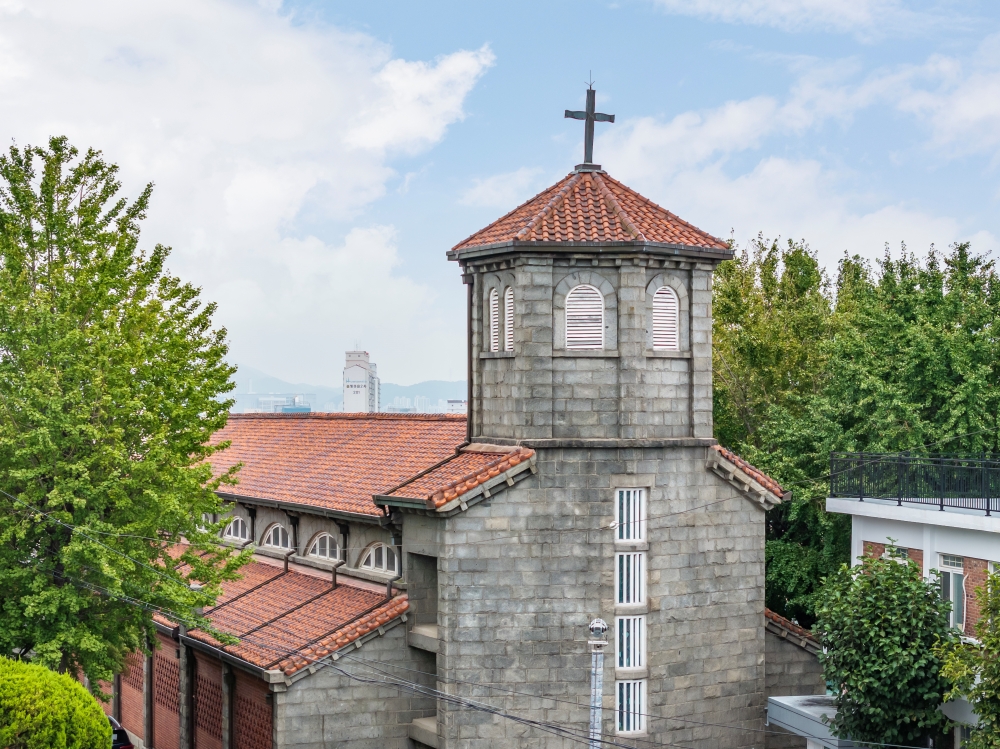
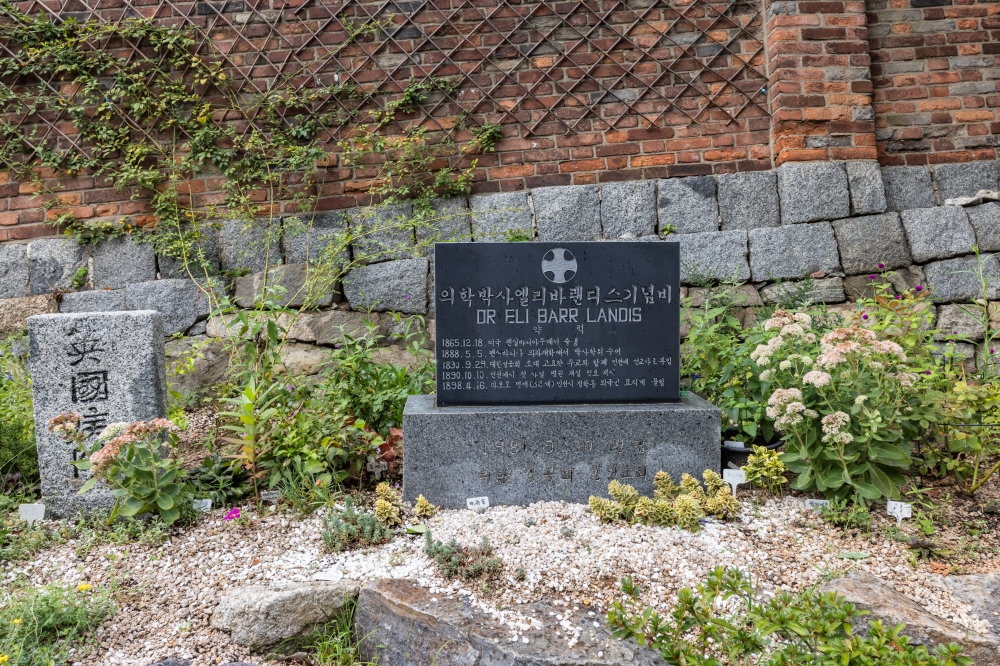
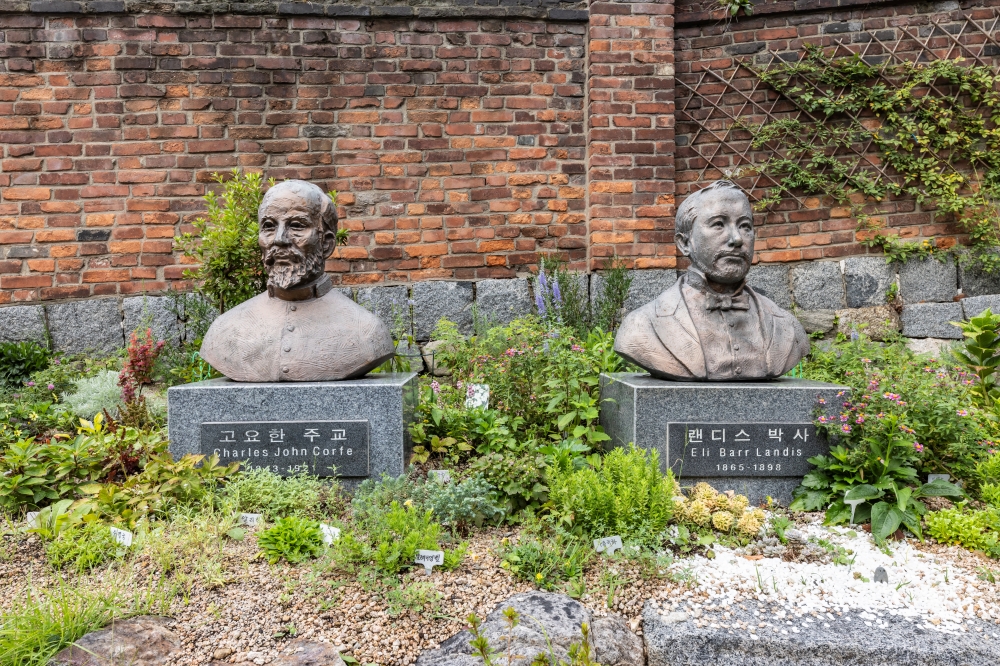
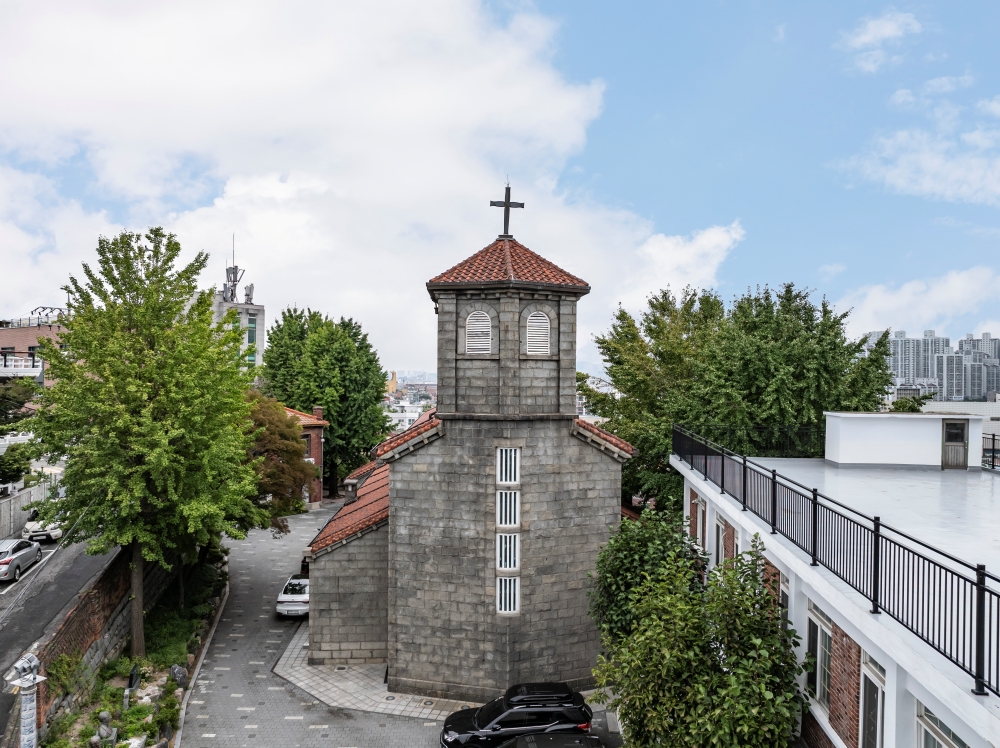
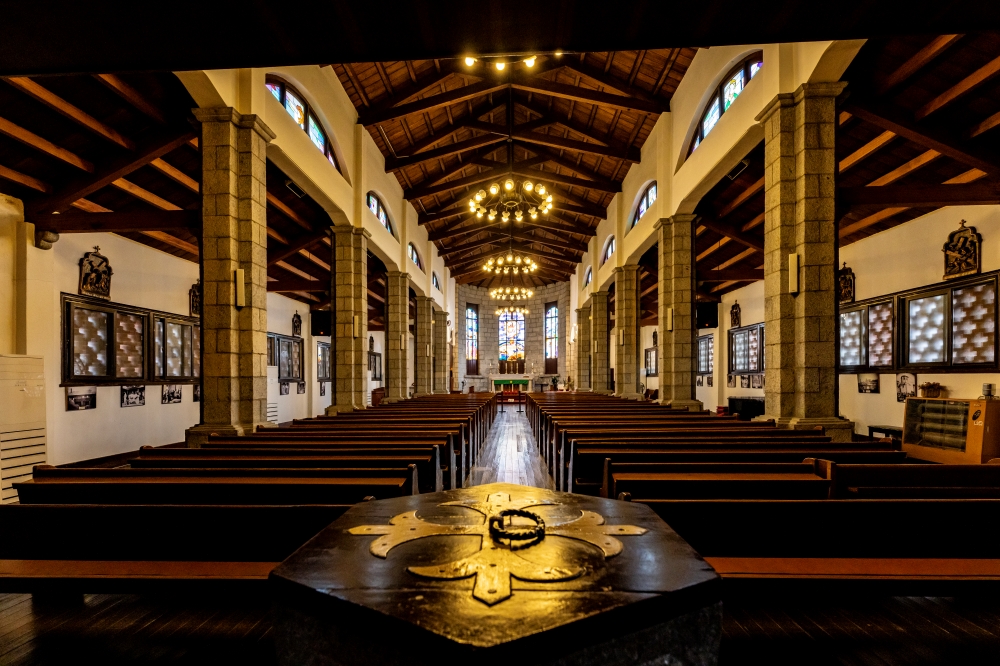



 919
919


